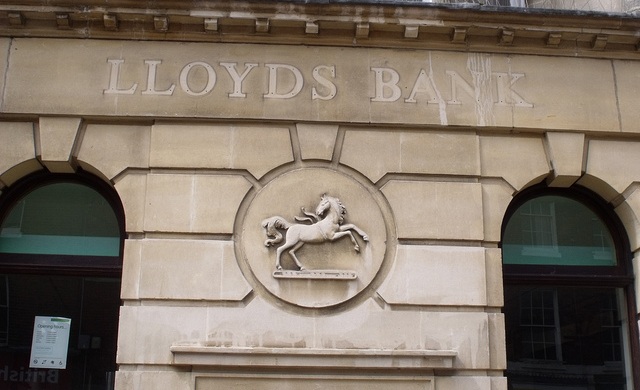I’m usually pretty hard on Lloyds (LSE:LLOY), I believe, rightfully so, in light of how the bank has conducted itself over the last decade. On the other hand, there is no sport in kicking a man who is trying to get back up.

When Lloyds released its First Quarter results this morning, its share price rose as high as 57.21 before settling in at 55.20, up 1.7 pence (3.18%) by 14:00. While the price is nowhere near the days when it traded at 214.0 back on 30 April 2008, neither is it at the 25.0 pence range where is was at less than a year ago at 28 May 2012. Nor is it like it hasn’t reached the magic mark of 61.0 pence since the bank was bailed out by UK taxpayers, having reached 77.41 at 20 September 2010.
What is important is that the public is witnessing positive progress toward complete recovery at Lloyds, including substantial increases in both underlying and statutory profits during Q1. It is the consistent progress toward profitability, whilst operating a fraudulent-free bank, that is regaining both customer and investor confidence.
Clearing the 61.0 pence mark for Lloyds will be like qualifying for the finals in the 100 meters. It doesn’t mean that they have won, but it does mean that they have a chance to win. The 61.0 pence mark is more or less the “break even” point for the British taxpayers to sell off their 39% share in the bank. But it’s not so much reaching 61.0 pence as it is exceeding it and continuing to rise beyond it to a point where the government can actually deposit more money into its coffers than it spent. That’s not something that most governments are accustomed to doing, and that’s exactly why the average taxpayer is so opposed to government bailouts.
So don’t expect the government to rush right off to sell its share in the bank. If break-even is 61.0, why not wait until the share price reaches 100.0, or 122.00, or even higher? Well, there may be some regulatory reasons for why not. Nonetheless, there is at least the hope for a brighter future for both the bank and the taxpayers.
Lloyds’ underlying profit rose the £497 million in Q1 2012 to £1,479 million in Q1 2013. Statutory profit jumped from £280 million to £2,040 million during the same period. A 4% reduction in core costs from £2,353 million to £2,269 million helped to return a core underlying profit of £1,871 million, a 19% increase over Q1 2012’s of £1,576 million.
We could post Lloyd’s entire Q1 report, but the numbers would not mean nearly as much to the general public as the progress on the banking group’s legacy issues – the real headline makers. As we reported several days ago, the sale of the Project Verde spin-off to the Co-operative Group is now dead in the water. Lloyds is now in the process of preparing to float the vision in an IPO, most likely in late 2013 or early 2014.
The other major legacy issue is the matter of following up on PPI miss-selling complaints. The bank’s statement indicated that the complaints being filed are in line with expectations, therefore there it is unlikely that there will be an additional unexpected expenses associated with this matter. Earlier this year the FSA fined Lloyds for failure to repay customers for illegally sold PPI in a timely manner. The FSA’s shot across the bow appears to have had its full effect.
Whilst we were angered to know the state of affairs in which Lloyds and other banks had once been, we are now much happier to hear CEO António Horta-Osório say that “We are delivering real benefits for customers, colleagues and shareholders by investing behind our simple, UK customer-focused retail and commercial banking model, and are now further ahead in our plan to transform the Group.”

 Hot Features
Hot Features











